The Jews settled in Catalonia in Roman times, and communities began to take shape in Barcelona and Gerona in the tenth century. By the twelfth century, there were five major Jewish centers: Barcelona, Gerona, Lerida, Tortosa, and Perpignan (French Catalonia). The Jews are mentioned in Catalonia’s first legal code, Els Usatges de la Cort de Barcelona. They distinguished themselves in agriculture, trade, administration, medicine, and the sciences. They also hosted Jews expelled from France, Germany, and Provence, which explains their influence on the ideas of the Kabbalah.
The Black Death of 1348 and the massacres of 1391 almost wiped out Jewish life, which was indeed annihilated by the events of 1492. In the first half of the thirteenth century, the Jewish community is estimated to have numbered between 10,000 and 12,000, or 4 to 7% of the total population.
The historical province of Navarre, straddling the Spanish-French border, was violently disputed by the Castilians and counts of Champagne. It was also where Jews from Arab Spain came together with those of Castile and France to take advantage of the famous pilgrimage route to Santiago de Compostela and thus contribute to its commercial prosperity.
The important center of Nájera gave its name to the eleventh century charter in which the king allowed the Jews the same rights as Christians and, most importantly, gave them liberty to organize themselves in accordance with rabbinic laws. In 1492 the Jews of Navarre, along with refugees from neighboring provinces, obtained respite from the ultimatum to convert or leave, but in 1498 the king of Navarre bowed to the pressure of the Catholic monarchs. Most of the community preferred conversion to exile.
Yehuda ha-Levi, Abrham ibn Esra, and Benjamin of Tudela are some of this region’s Jews who made an important contribution to the arts.
The presence of Jews in Castile and León is attested as far back as the tenth century. Over the centuries that followed, the rulers granted the Jews the same rights and duties as of the Christians. The rulers considered the Jews their personal property, and, throughout the period of reconquest, the community helped with the administrative and commercial organization of the conquered territories. In the twelfth century, royal legislation sought to protect the Jews from the growing risk of violence by grouping them in special quarters around the king’s or archbishop’s palace or within the shelter of its walls. Unfortunately, war between Christian kingdoms was rife in this period, and Jews often suffered the consequences.
In the thirteenth century, Toledo became the capital of Castilian Judaism. The so-called “Huete census” of 1290 provides a reasonably faithful map of Jewish communities in Castile and León.
The wave of violence of 1391 hit nearly all these juderías and marked the beginning of their decline, notwithstanding efforts to revive them at the meeting in Vallodolid in 1432. In 1492, the Jews expelled from these regions headed mainly for Portugal. Whatever material traces they left behind have, with only one or two exceptions, been destroyed.
The oldest vestiges of a Jewish presence in Germany are found in the Rhineland. For a long time, the river constituted the western border of the Roman Empire. In the fortified cities of the frontier, such as Colonia Agrippina (Cologne), the Diaspora Jews found favorable conditions in which to exercice their industrial and commercial talents.
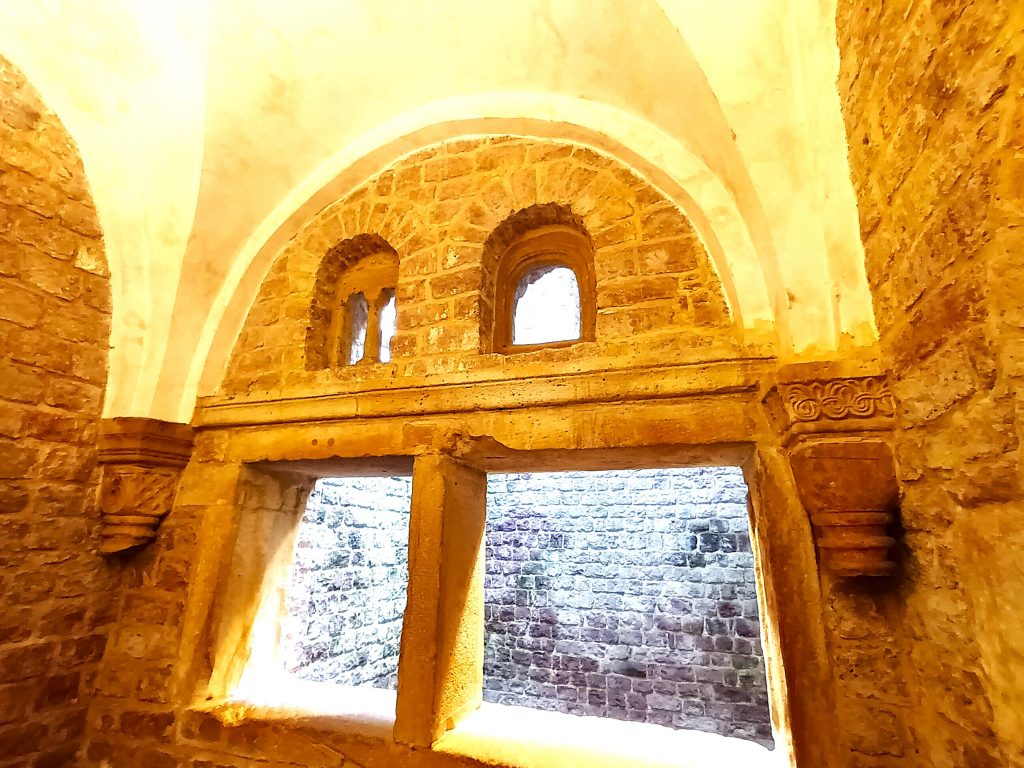
Development of Rhenish judaism
Later, in the Middle Ages, in cities such as Worms and Frankfurt, which were under the direct authority of the emperor, the Jews benefited from the sovereign’s protection. Some prince-bishops, such as those of Speyer and Mainz, made a show of their autonomy from Rome by according the Jews the right to engage in trade. Seeing the Jews as heretics and rivals, the papacy, in contrast, preached a policy of separation. In the tenth and eleventh centuries, the vitality of Rhenish Judaism rivaled that of Andalusia before the Inquisition in its religious and intellectual prosperity.
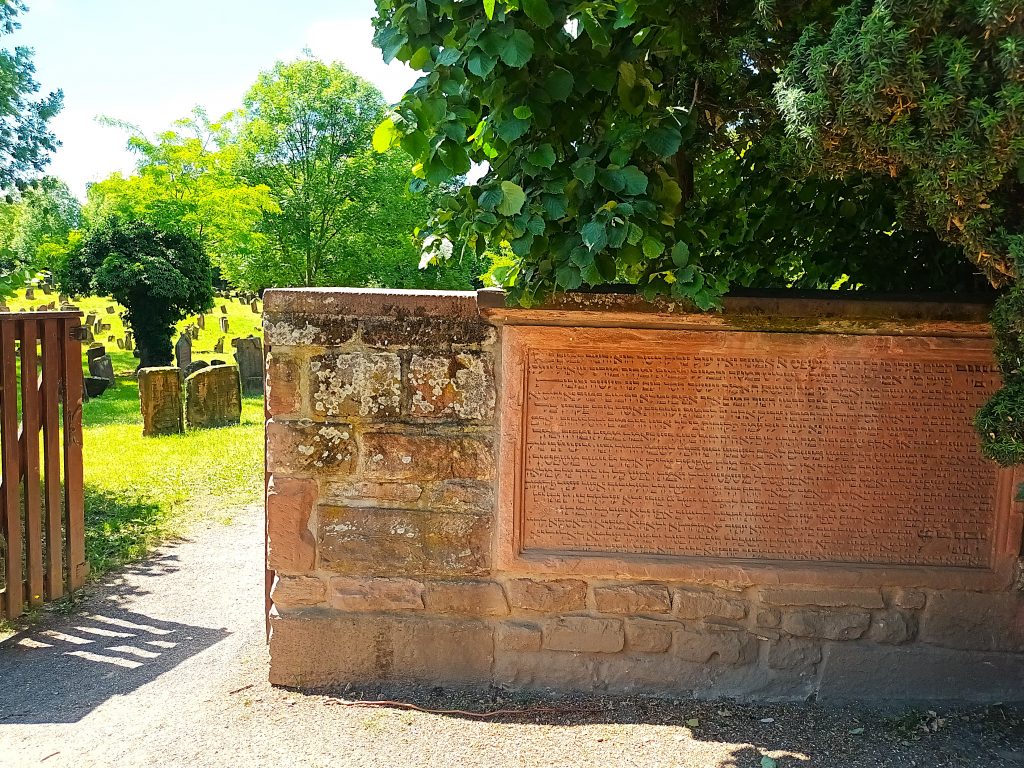
Rhenish Judaism owed its survival in the face of persecution to the ability of the Jews at court. Centuries later, this community fostered the modern enlightened thinking of such figures as Meyer Amschel Rothschild in Frankfurt, Karl Marx in Trier, Heinrich Heine in Düsseldorf, and Jacques Offenbach in Cologne.
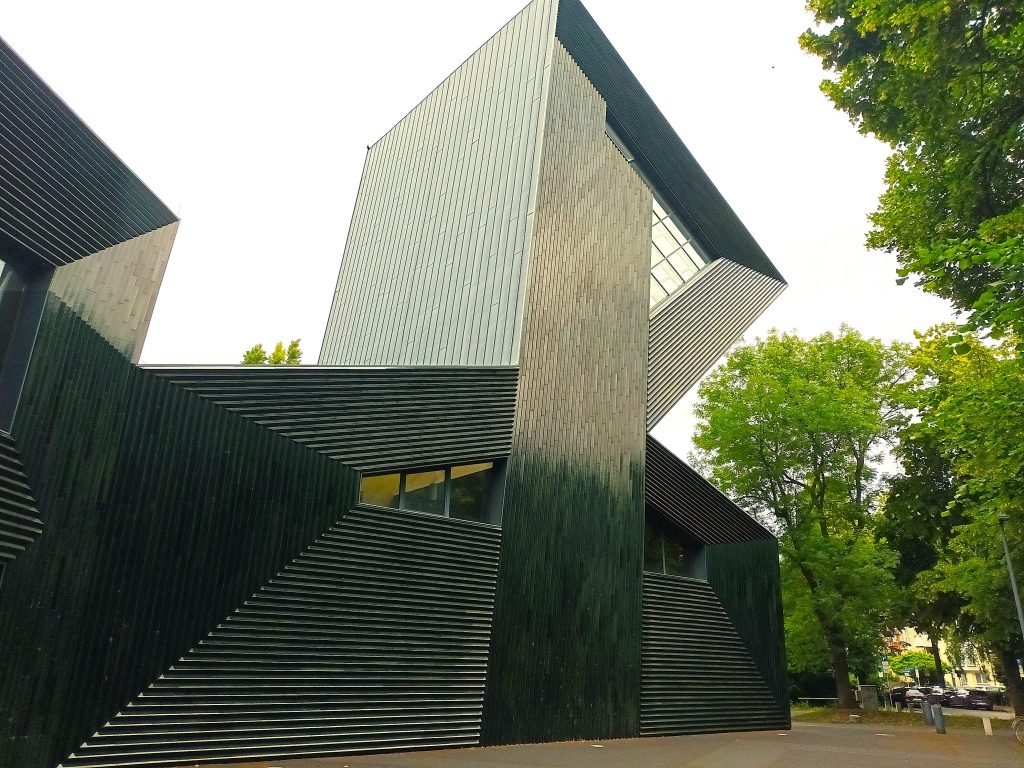
In 2021, the Jewish remains of three cities in the region, Worms, Speyer and Mainz, were recognized on the UNESCO World Heritage List. This was a first for Jewish cultural heritage in Germany for this institution. They were praised for their role as the cradle of regional Jewish civilization but also for the interreligious work with Christian communities carried out by the communities of these cities.
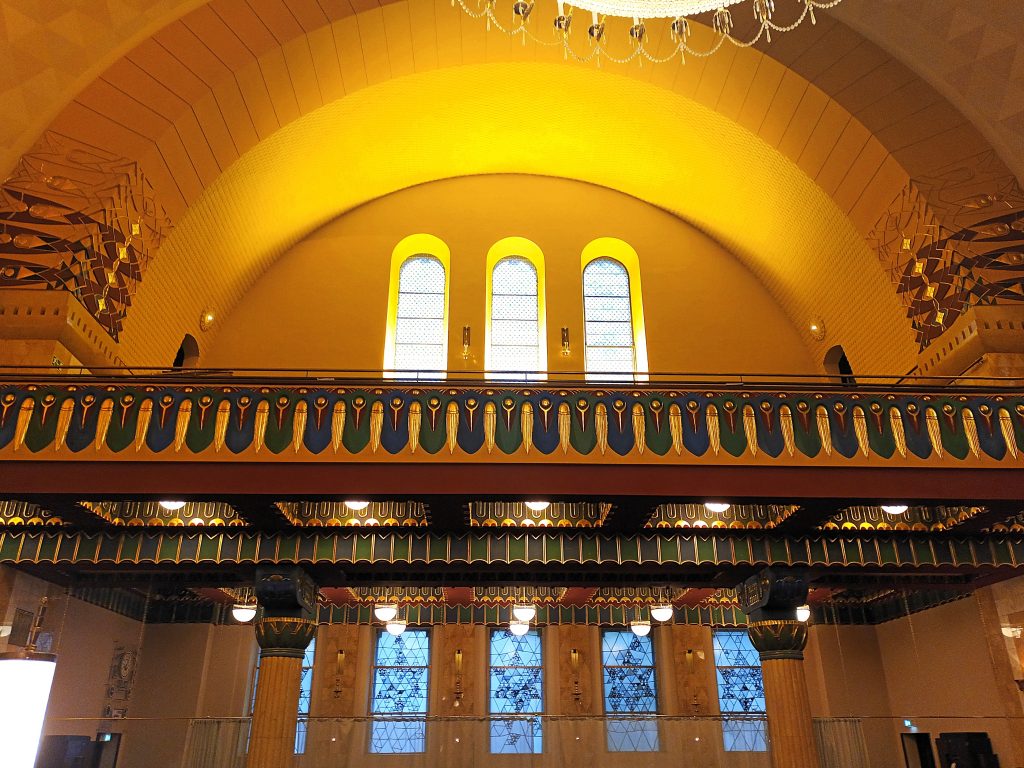
The Jewish community in Mainz is the largest in the region with almost 1000 members. A new synagogue was built there in 2010. It was built on the site of a previous synagogue, dating from 1912 and destroyed during the Holocaust.
Rabbi Meir of Rothenburg
An expert in the study of the Torah, Rabbi Meir of Rothenburg attracted students to the yeshiva from all over Europe. He preached returning to the Jewish ancestral lands in order to escape the persecutions rife at the time. He himself left for Jerusalem but was stopped in Lombardy by the troops of Rudolph of Habsburg, who did not want to see his “charges” flee to the Orient, because of their considerable value as taxpayers. The rabbi refused to let his friends pay the enormous ransom for his freedom and died in prison in 1286. It was only fourteen years later that the emperor consented to give his remains back to his community. They were brought by Alexander Süsskind Wimpfen, a wealthy Jew from Frankfurt who sacrificed his entire fortune to the Jewish community for the privilege of being buried next to the rabbi when he died.
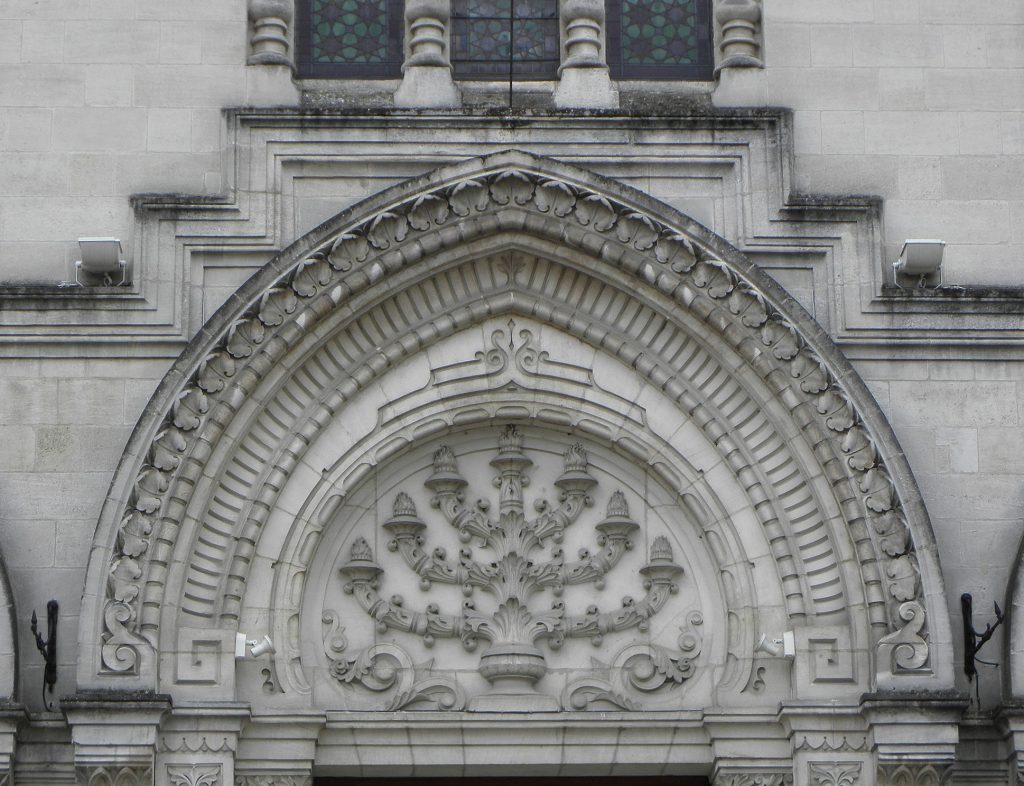
After many years of English domination, the southwest was returned to France in the fifteenth century, at the end of the Hundred Years War. In an effort to stimulate growth in this ravaged region, Louis XI offered special privileges to foreigners wishing to settle there. This largesse attracted Portuguese and Spanish Jews oppressed by the Inquisition and religious intolerance in their home countries.
Occitanie is a very rich region geographically, thanks to its proximity to the Pyrenees and the Mediterranean, but it is also culturally rich. It brings together territories with very different histories and experiences. You’ll find prehistoric remains in its caves, and monuments from the Roman era such as the Pont du Gard and the Nîmes Arena.
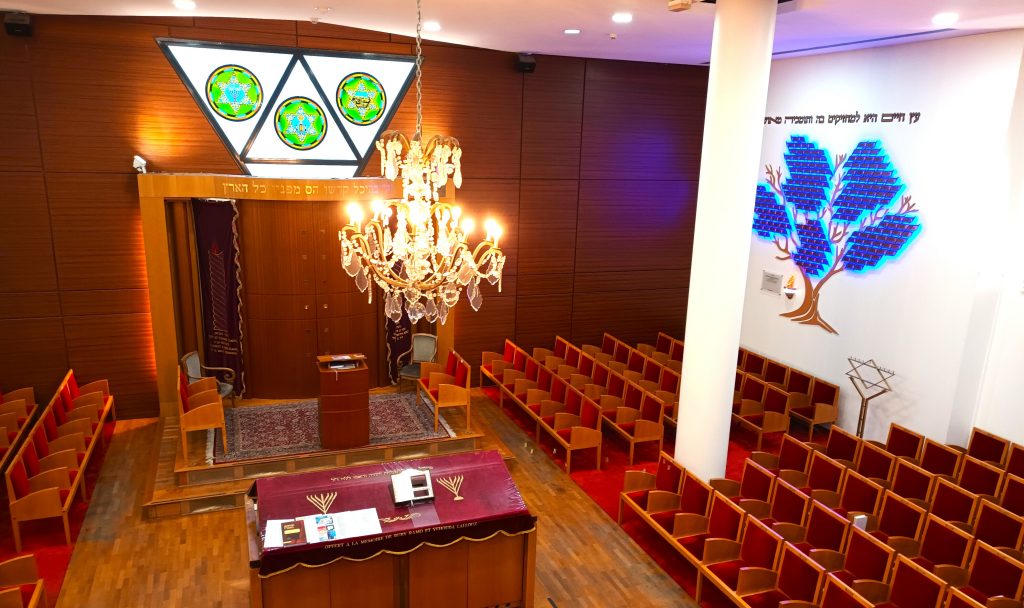
While Jewish presence in the region has been documented since Roman times, its golden age was undoubtedly the classical Middle Ages. The writings of the great traveller Benjamin of Tudela bear witness to this, as do, above all, the intellectual, cultural, scientific and religious activities. From Béziers, nicknamed “Little Jerusalem”, to the medical discoveries of Isaac de Lattes, the famous yeshivot of Lunel, Narbonne, Nîmes, Posquières-Vauvert and Perpignan, the medieval mikveh of Montpellier and the merchants of Pézenas. It also has an important contemporary history, with many Jews taking part in Resistance networks in Toulouse and the rest of the region. The Pink City is also infamous for the anti-Semitic murders that took place there in 2012.
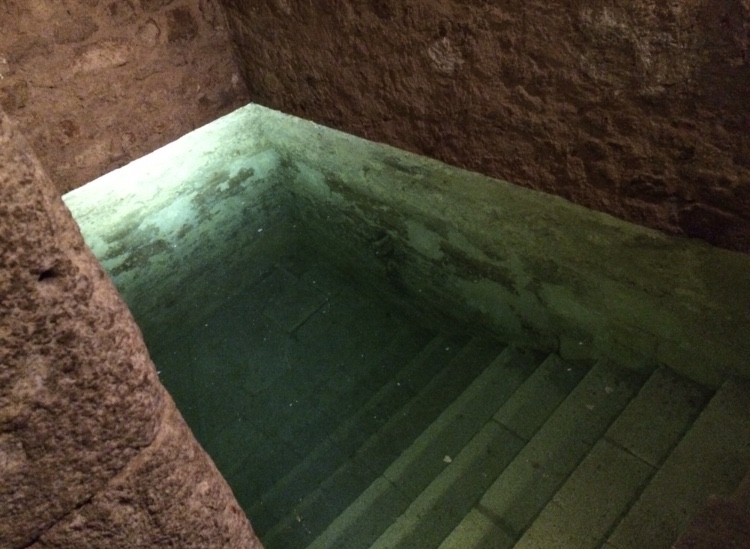
The term Provintçia in the Hebrew sources corresponds roughly to Provence and Languedoc. In the history of France’s Jews, this region is notable for the outstanding figures and works that it produced in the Middle Ages and by the unbroken presence of Jews in Comtat Venaissin for 2000 years.
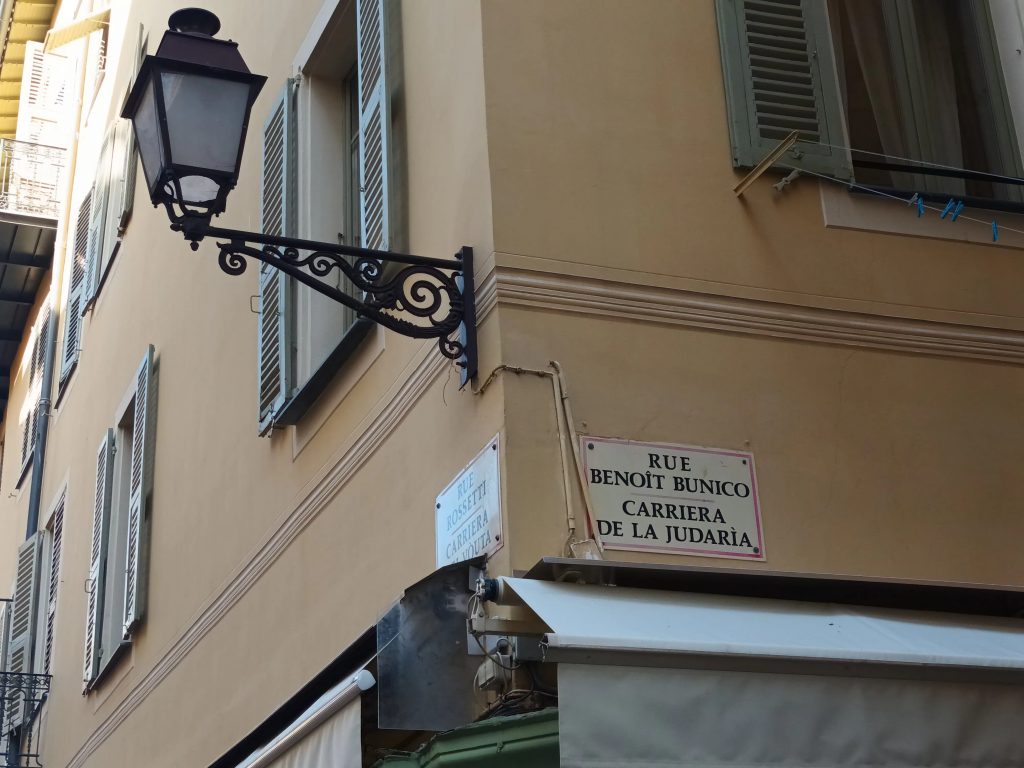
A lamp dating from the first century C.E. found near the oppidum at Orgon and kept in the synagogue at Cavaillon, and a Hebrew epitaph at Narbonne (“Peace on Israel”) accompanied by a menorah, probably seventh century, are the oldest relics of the Jewish presence in France. In the sixth and seventh centuries, Marseille was home to a large Jewish community. The Saracen invasions of the following century brought to the fore Jewish “patriotism”: during the siege of Narbonne, Jews played an active part in defending the town. The Emperor rewarded them with a grant of one of the town’s three districts. The legend of the “Jewish king of Narbonne” dates from this period.
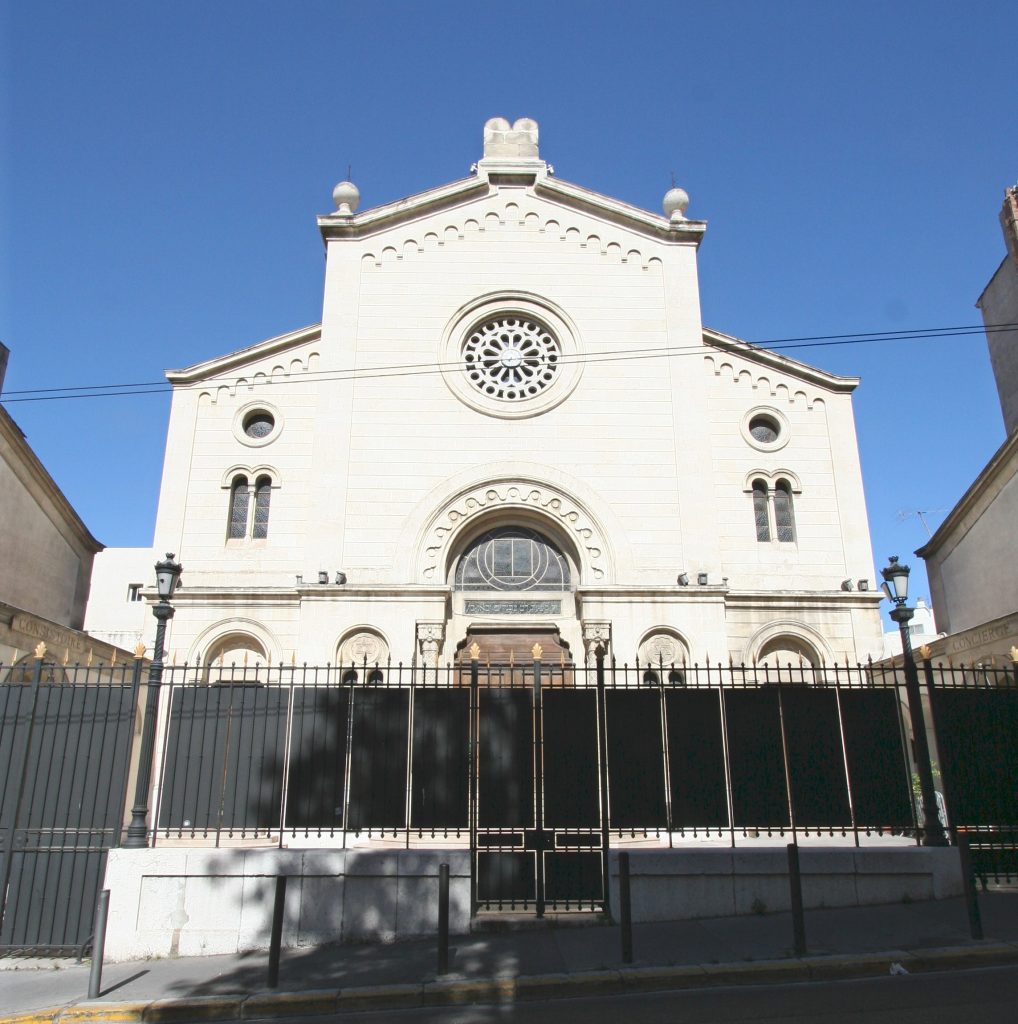
Historical studies of Provençal towns reveal a Jewish community integrated into its urban and rural environment. Its members were, among other things, tradesmen (plasterers) in Avignon, winemakers in Tarascon, merchants in Marseille and Toulouse, and shopkeepers, moneylenders, and doctors almost everywhere. However, it was in the cultural domain that the vitality and openness of Provence’s Jewish communities were most remarkable. In the twelfth century, the traveler Benjamin de Tudela related that “In Lunel there lives a big Jewish community that studies the Torah day and night. All those who wish to study and board. Posquières is a town that shelters more than 400 Jews as well as a Talmudic school directed by the grand rabbi Abraham, son of David (abbreviated as RABaD). People come from the most distant lands to learn the Torah“. There is not enough space here to list all the learned men who lived in Provence between the twelfth and fifteenth centuries. Among the most remarkable, though, were the Abraham ben David of Posquières (1125-98), as mentioned by Benjamin de Tudela; Menahem ben Solomon He-Meiri (1249-1316) and his father Solomon, both famous Talmudists who wrote important commentaries. the four generations of Tibbonides (1120-1307), who translated a number of philosophical, religious, and scientific works from Arabic into Hebrew, notably Maimonides’ Guide for the Perplexed (Dalalat al-Ha’irîn); and, finally, Levi ben Gershom (1288-1344), or Gersonides, who spent most of his life in Orange and produced a vast and highly diverse body of work, much of which was translated into Latin at the time (commentaries on Aristotle and Averroës, on the Bible and the prophets, on the Talmud, works of arithmetic and geometry, a treatise on astronomy, etc.).
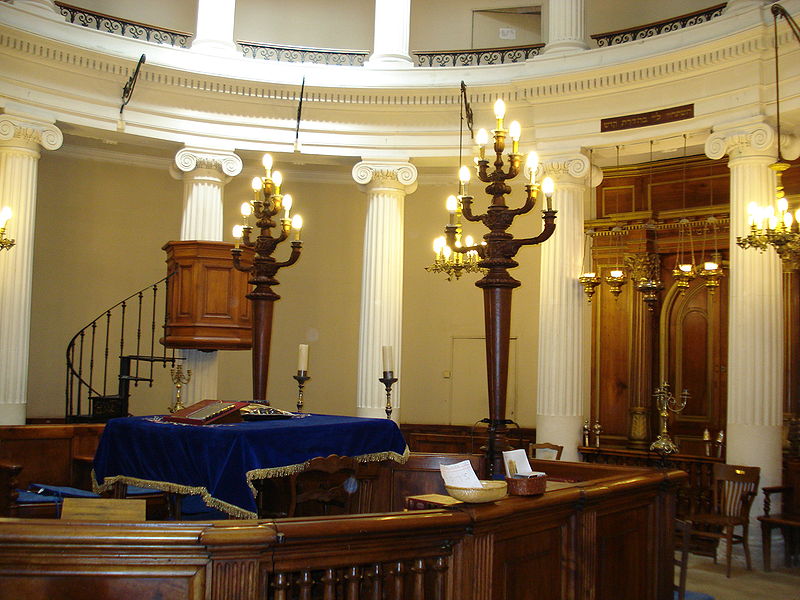
In 1306, Philippe le Bel expelled all the Jews from the Kingdom of France. They were called back in 1315 by Louis X. In 1320, the Crusade of the Pastoreaux caused massacres throughout southwest France. The expulsion of 1394 put an end to the Jewish presence in Languedoc. The communities of Provence, Comté de Nice, and the Principality of Orange, then still distinct from France, were not affected by these expulsions. However, they were hit hard by the Black Death of 1348. The Jews were accused of poisoning the wells in order to spread the epidemic. The communities of Provence and Comtat Venaissin were almost totally wiped out in riots.
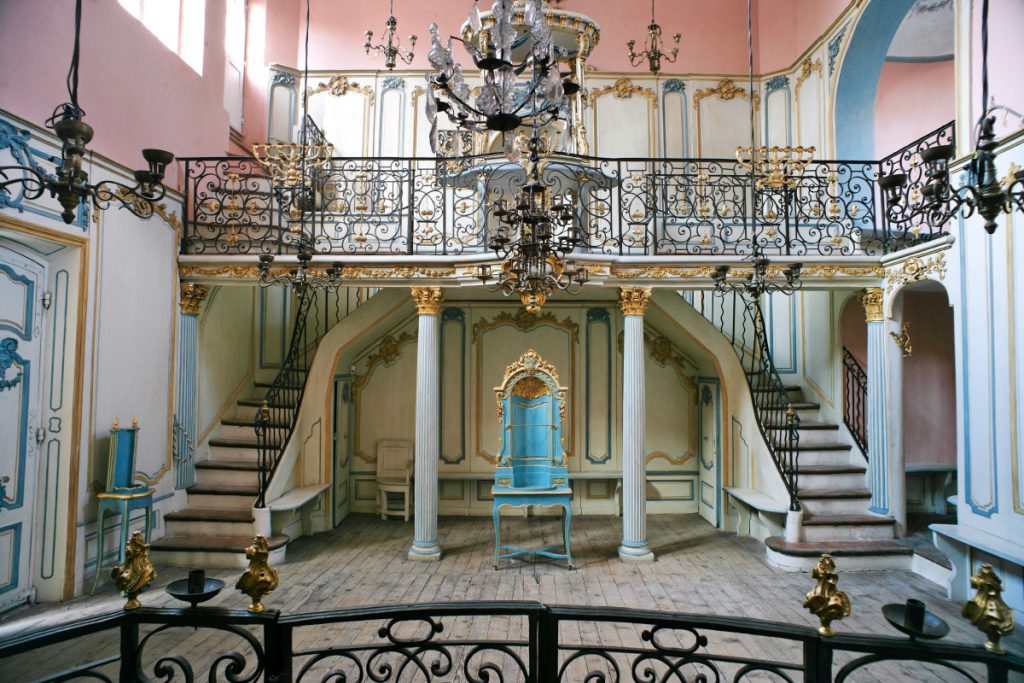
The fifteenth century, too, brought its series of anti-Jewish riots: there was violence and killing in Manosque in 1425, in Aix-en-Provence and Pertuis in 1430, in Digne in 1475, and again in Manosque in 1495. The destiny of this region changed course on 11 December 1481 when, following the death of Count Charles III, Provence was bequeathed to the king of France, Louis XI. The latter committed himself to respecting the rights of the Jews, but after his death in 1483, Louis XII signed the edict expelling Jews from Provence. He renewed it in 1510. Part of the community converted; the other part left. In 1505, the prince of Orange signed the Edict of Courthézon, expelling the Jews from the principality. Part of Provence’s Jewish community emigrated to Italy, while others traveled to Barbary (North Africa), the Ottoman Empire, or Comtat Venaissin, the last area in this part of the continent to welcome the Jews.
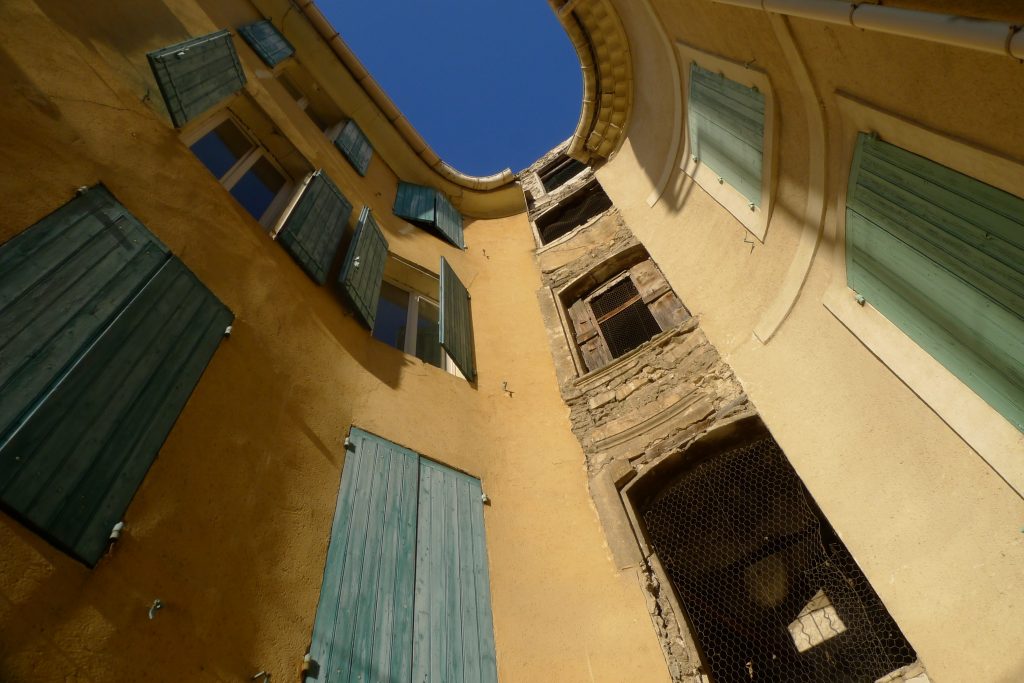
Any peace enjoyed in Comtat Venaissin was short-lived. At the end of the fifteenth century, the Pope (to whom this region belonged) decided to group Jews together in carrieres (urban dwelling places for Jews). This compounded the discriminatory measures dating back to the Fourth Lateran Council (1215): strict separation from Christians; the obligation to wear an identifying sign (a yellow patch, then a yellow hat); economic restrictions (a prohibition against owning property apart from their dwelling); selling limited to secondhand items (clothes, objects); and disqualification from manual professions.
Following Cardinal Barberini’s order in September 1624, the Jews in Comtat Venaissin had to congregate in three towns: Carpentras, Cavaillon, and L’Isle-sur-la-Sorgue. Most historians add Avignon to this list and speak of “Comtat’s four carrieres“, but this is clearly a misnomer since Avignon was never part of Comtat Venaissin.
At night the carrieres were closed off, and the gate was watched by a Jewish porter who was paid by the community. As Armand Lunel notes, these carrieres were “small republics” where the Jewish population lived in isolation; they were administered by syndics who issued escamots (from the Hebrew Haskama, meaning “agreement”).
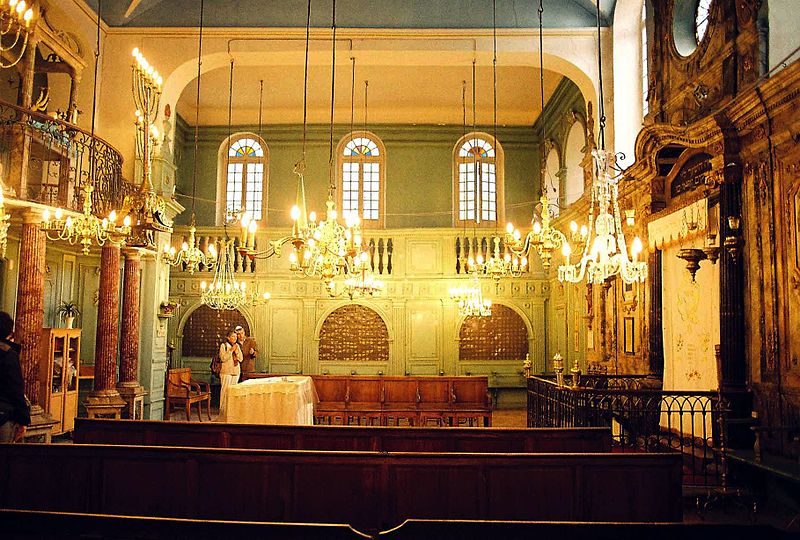
Although the edict of 1394 had not been repealed, starting in the seventeenth century, Jews from Avignon and Comtat Venaissin took advantage of the ambiguous regnicole (right-holding) status of the inhabitants of Comtat Venaissin and gradually began settling in the Kingdom of France. This window considerably increased their access to new markets and improved their economic situation.
In the eighteenth century, the financial situation of the region’s Jewish community improved. While still restricted to their carrieres and obliged to wear the yellow hat, many were able to make a living from lending money for interest and from the authorized professions. Jews were active in numerous mercantile areas, such as horse dealing, buying and selling cotton, the silk trade, second-hand clothes, etc. The synagogues in the carrieres were rebuilt at great expense: Carpentras in 1740, L’isle-sur-la-Sorgue and Avignon in 1760-1770, and Cavaillon between 1771 and 1774.
Despite these gains, the specific status of the Jews did not improve, and in fact restrictions increased. On 28 January 1790, the National Assembly passed a decree stipulating that “Portuguese, Spanish, and Avignonnais Jews shall continue to enjoy the rights settled in their favor and the letters patent; and, consequently, they will enjoy the rights of active citizens once they have met the conditions laid down by the decrees of this Assembly”.
Jews lived in Roman Lugdunum but disappeared from Lyon because of the expulsions. It was only under the reign of Louis XV that a community was re-created with immigrants from Comtat Venaissin and Alsace. The region is associated primarily with World War II and the French Resistance. The notorious war criminal Klaus Barbie, who was tried in 1986, was the head of the Lyon Gestapo.
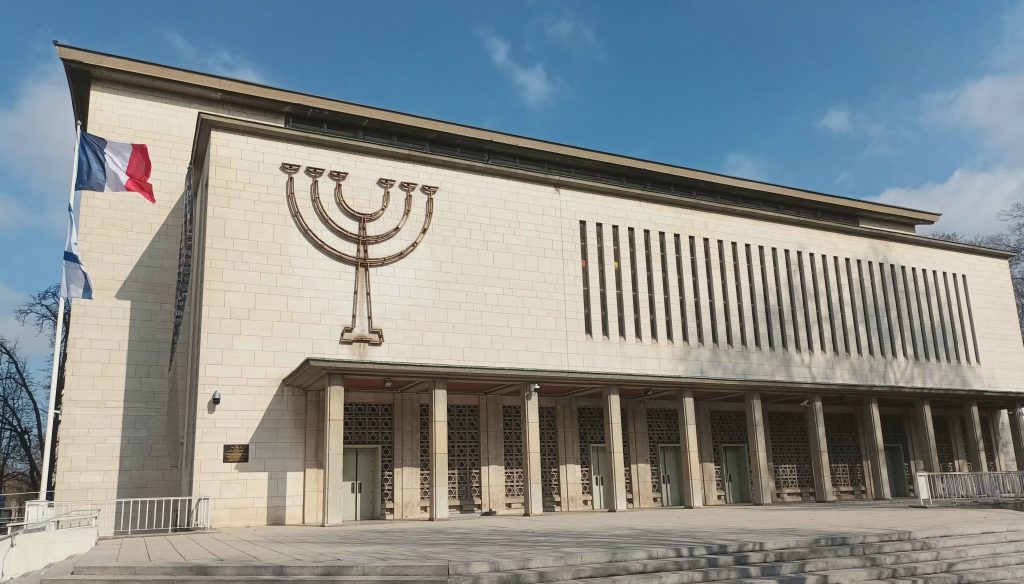
Alsace is rich in Jewish history. In the village of Schirrhoffen, for example, in around 1850, the population of 650 included some 450 Jews. Today, there are over 200 specific sites (synagogues, ritual baths, cemeteries). Unfortunately, though, there are many that visitors cannot see because they are closed, abandoned, or located on private property. Thus, while the small town of Rouffach (in Haut-Rhin) may pride itself on the vestiges of a twelfth-century synagogue, all you will see is the refaced facade of a banal half-timbered house.
Elsewhere, the nineteenth-century village synagogues offer a remarkable architectural panorama. The reality of Jewish emancipation can be read in stone: one need only compare the discreet facade of the synagogue in Hochfelden (Bas-Rhin), built in 1841, with that of the synagogue in Saint-Louis (Haut-Rhin), consecrated in 1904, whose two Rhenish-style domes rise proudly to the sky.
In recent years, tremendous efforts have been made to save Alsace’s Jewish heritage. Restored synagogues and new museums now form a fascinating and unique Jewish itinerary. The tourism development agency of Bas-Rhin , which is managing this program, published brochures and a calendar of events.
Alsace is not only one of the most emblematic places in European Jewish history. The presence of numerous sites marking this history is unique in such a small area. Nevertheless, given the upsurge in prejudice and anti-Semitic acts, there is an urgent need to ensure a link between this thousand-year-old history, the dynamism still very much alive in certain communities, and a peaceful future sharing of this heritage. A major project is in the process of being launched: that of registering the synagogues of Alsace as a UNESCO World Heritage Site. We met one of the driving forces behind the project, Thierry Koch, President of the European Days of Jewish Culture – France.
Jguideeurope: How did the UNESCO World Heritage listing project come about?
Thierry Koch: The idea of listing Alsace’s synagogues as UNESCO World Heritage sites was first put forward in 2006(*). Since the first open house in the Bas-Rhin in 1996, there have been a number of initiatives, albeit mostly scattered, to study, preserve, and promote Alsace’s tangible and intangible Jewish heritage. The aims include raising awareness among owners, local authorities, and the general public of the future of a heritage threatened by the inevitable disappearance of Jewish communities that were once scattered across rural Alsace; protecting sites from the desecrations that have become more frequent since 2000; and documenting this heritage historically and scientifically. Faced with the risk of scattering our efforts and the ageing of our pioneers, we now need to move up a gear. How can we do this? Through a medium- and long-term project that mobilises and brings together all the energies and skills involved. On the other side of the Rhine, the UNESCO World Heritage listing obtained successively by the Jewish sites of SchUM (Speyer, Worms, Mainz) in 2021, then Erfurt in 2023, has shown the way. This is why the project to list the synagogues of Alsace as World Heritage Sites has been ‘pulled out of the drawers’. It has emerged as the ambitious project that meets the need. Its major asset is the exceptional density of the ‘collection’ of 80 synagogues in Alsace. This is unrivalled anywhere in Europe.
(*) : note from Mr Jean-Pierre Lambert
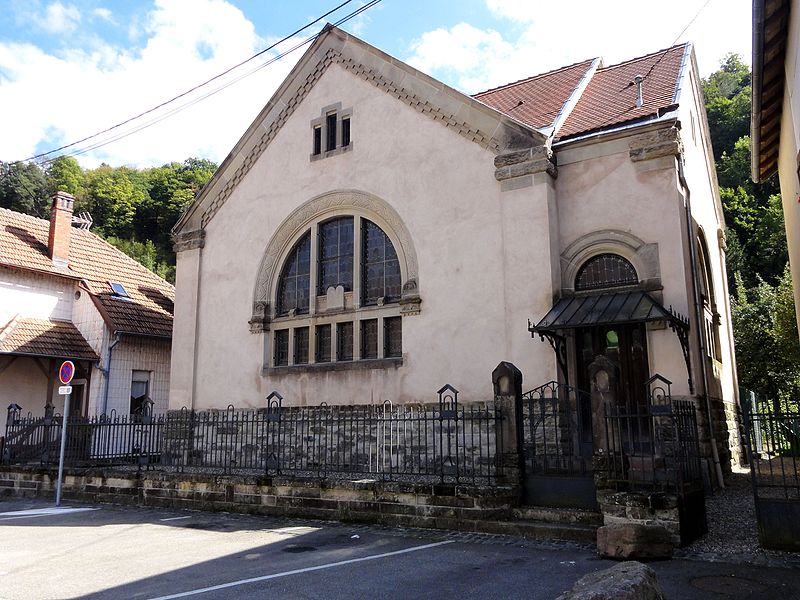
How are the municipal and regional authorities involved?
Over the past 25 years, the municipal, departmental (the two departments and now the Alsace European Collectivity) and regional (the Alsace Region and now the Grand-Est Region) authorities have supported many of the initiatives mentioned above. It is clear that these authorities will be called upon to play an essential role in the World Heritage listing project. Their presence will be crucial to the credibility of the project. Firstly, at the time of the national selection by the Ministry of Culture, and then when the project is presented and defended before the UNESCO selection committee. In addition, the local authorities will be called upon to provide part of the funding needed to develop the project and then build the infrastructure and facilities that will be required to obtain and later maintain the World Heritage label. The Grand-Est Region is already funding a post for the scientific inventory of synagogues in Alsace. Another example of what is already being done is the hosting of the associations of the Pôle du Judaïsme Rhénan in the Maison du Patrimoine, in the Hôtel des Joham de Mundolsheim, a 13th-century house located at 15 rue des Juifs, in the heart of Strasbourg’s old medieval Jewish quarter, a building entirely renovated by the CDC and donated to the City of Strasbourg.

What other institutions are involved?
From a legal point of view, in order to accommodate the municipal, departmental, and regional authorities, the project will probably be managed by a Public Interest Grouping (GIP). This structure will enable public bodies and associations to work together, not forgetting the two key players, the Consistoires Israélites du Bas-Rhin et du Haut-Rhin, which own a large proportion of the synagogues.
In order to be able to launch the project at the beginning of 2025, it was decided to start by creating an association under local law to bring together all the institutions other than the local authorities. This association is designed as a precursor to the future GIP.
The seven institutions that will form the local law association currently being set up are: the Consistoire Israélite du Bas-Rhin, the Consistoire Israélite du Haut-Rhin, the Maison du Judaïsme Rhénan, the Routes du Judaïsme Rhénan, the Société pour l’Etude du Judaïsme d’Alsace-Lorraine, the Association René Hirschler (which is a Strasbourg component of the Bnai Brith de France), JECPJ-France (European Days of Jewish Culture-France). Among these associations, particular mention should be made of the unifying role played by the Maison du Judaïsme Rhénan, chaired by Catherine Trautmann, former Mayor of Strasbourg and former Minister of Culture. It was this association that provided the physical framework for the project within the Strasbourg Heritage Centre.
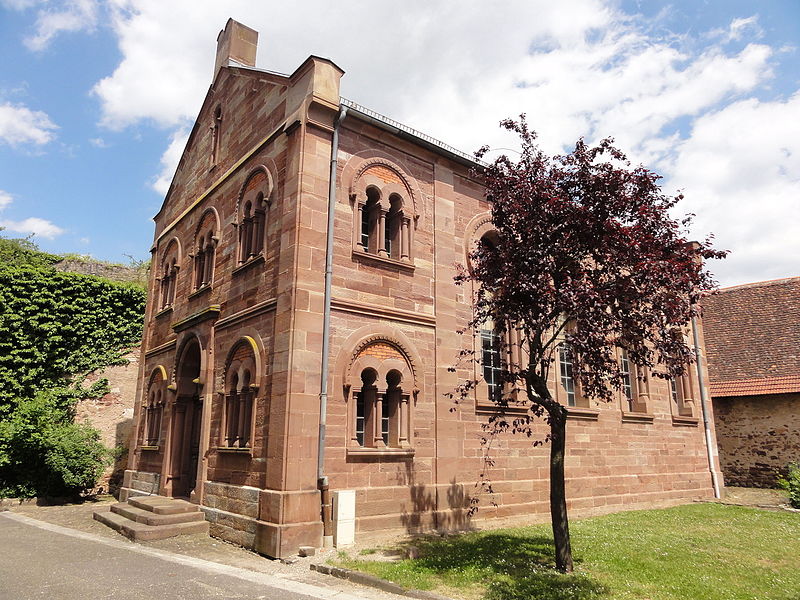
Is this project particularly important at a time when anti-Semitic acts are soaring?
Yes, we think so. Inscribing the synagogues of Alsace on the World Heritage List is first and foremost a reminder of the very ancient presence of the Jews in this land of Alsace, and of the close links forged in the past in rural areas between the Jews and their Christian neighbours (Catholic or Protestant). Once the project has been completed, the synagogues of Alsace will become a source of pride for the whole of Alsace, so that the local population can really take ownership of Alsace’s Jewish heritage. Finally, the museographic and educational projects that will result from this labelling project will be tools available not only to tourists but also to the local population, particularly the younger generations, with a view to informing and educating them.
Jewish life in Normandy was focused around Caen and Rouen. The Jewish community lives in the region since the Roman empire until their expulsion in 1182.
During the Middle Ages, Normandy was the region of France with the largest Jewish community. Their installation in London was favored by William the Conqueror. Rouen was an important center for judaism and Caen had a synagogue until 1306.